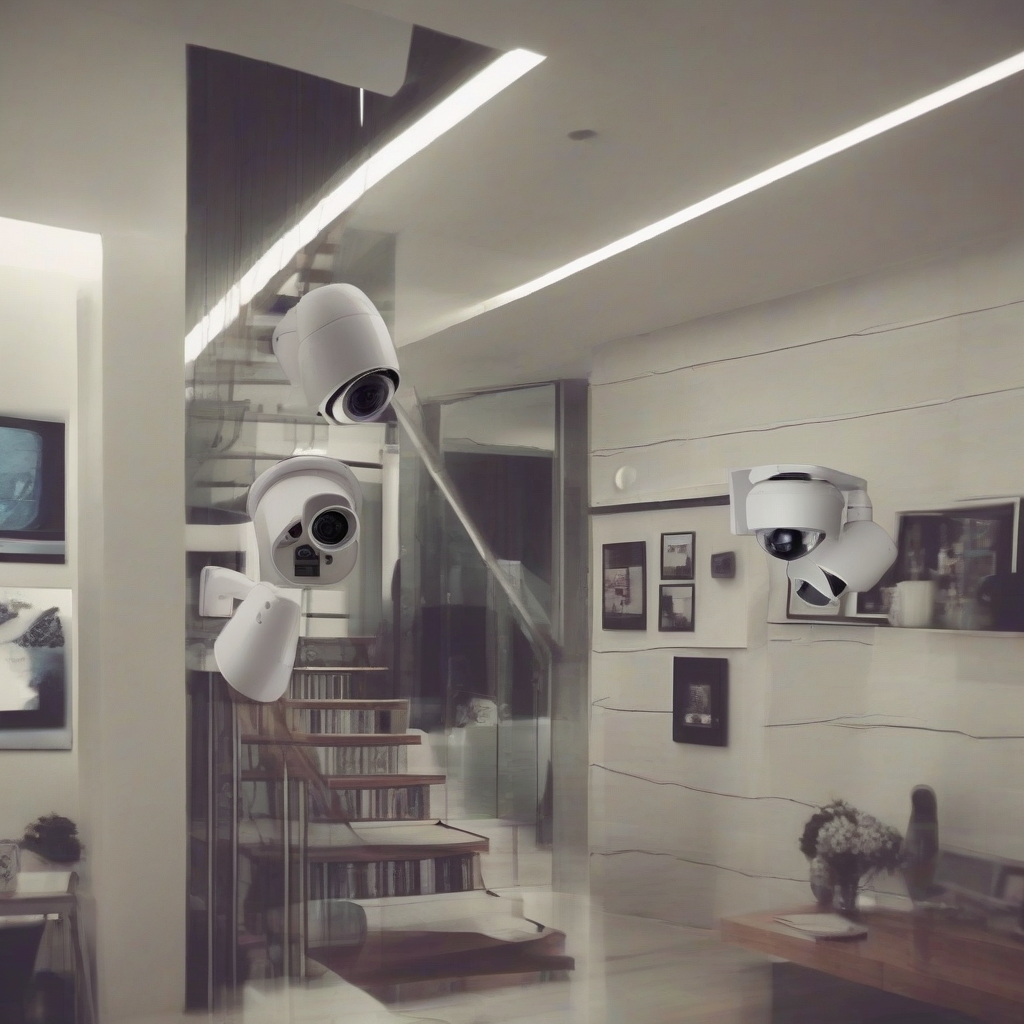Home Security System Cameras: A Comprehensive Guide to Protection and Peace of Mind
In today’s world, home security is paramount. Investing in a robust home security system, with cameras at its core, offers peace of mind and a significant deterrent against potential threats. This guide delves deep into the world of home security system cameras, exploring their various types, features, functionalities, and considerations for optimal deployment.
Types of Home Security System Cameras
- Wired Cameras: These cameras offer reliable connectivity and superior video quality, generally unaffected by internet outages. They require physical wiring for power and data transmission.
- Wireless Cameras: Utilizing Wi-Fi or other wireless protocols, these cameras offer flexibility in placement but can be susceptible to signal interference and internet connectivity issues. Battery-powered options provide additional portability.
- IP Cameras (Internet Protocol): These cameras connect directly to your network, often offering advanced features such as remote viewing, two-way audio, and integration with other smart home devices.
- PTZ Cameras (Pan-Tilt-Zoom): These cameras offer remote control over panning, tilting, and zooming capabilities, allowing for comprehensive surveillance of a wider area.
- Dome Cameras: Designed for discreet placement, these cameras have a rounded housing, making it difficult to determine the exact direction of the lens.
- Bullet Cameras: These cameras have a cylindrical shape and are typically used for outdoor applications due to their weather resistance and durability.
- Hidden Cameras: These cameras are disguised as everyday objects to provide covert surveillance.
Key Features and Functionalities
- High-Definition Video: High-resolution video (1080p or higher) provides clear and detailed images, crucial for identifying individuals and objects.
- Night Vision: Infrared (IR) technology allows cameras to capture clear images in low-light or complete darkness.
- Motion Detection: This feature triggers recordings or alerts when motion is detected within the camera’s field of view, conserving storage space and providing timely notifications.
- Two-Way Audio: Allows for communication with individuals in the camera’s range, useful for deterring intruders or speaking to delivery personnel.
- Cloud Storage: Storing recordings in the cloud provides backup and accessibility even if the local storage device is compromised or fails.
- Local Storage: Storing recordings on a local device like an SD card or Network Video Recorder (NVR) provides offline access and avoids potential cloud storage costs.
- Smart Home Integration: Many cameras integrate with smart home ecosystems, enabling control through voice assistants and automation with other smart devices.
- Facial Recognition: Advanced cameras can recognize and identify familiar faces, providing customized alerts and notifications.
- AI-Powered Analytics: Some cameras utilize artificial intelligence to detect specific events, such as package delivery, person detection, or unusual activities.
- Weather Resistance: Outdoor cameras should be weatherproof (IP65 or higher) to withstand various weather conditions.
Choosing the Right Home Security System Cameras
Selecting the appropriate cameras depends on various factors. Consider the following aspects:
- Budget: Cameras range in price significantly based on features and technology. Set a realistic budget before beginning your search.
- Location: Indoor or outdoor placement influences camera selection. Outdoor cameras need weatherproofing, while indoor cameras prioritize aesthetics and features.
- Coverage Area: Consider the area you want to monitor and choose cameras with appropriate field of view and potentially PTZ capabilities.
- Connectivity: Wired or wireless connectivity depends on your existing infrastructure and desired flexibility.
- Storage Options: Local storage offers reliability but requires managing storage space. Cloud storage is convenient but incurs ongoing costs.
- Integration with Existing Systems: If you have a pre-existing smart home system, choose cameras that are compatible.
- Ease of Use: The user interface and app should be intuitive and easy to navigate for managing cameras and reviewing recordings.
- Customer Support: Consider the reputation and responsiveness of the manufacturer’s customer support.
Installation and Setup
Installation and setup processes vary depending on the camera type and chosen system. Generally, it involves:
- Choosing Locations: Strategically place cameras to cover entry points, valuable areas, and blind spots.
- Wiring (for wired cameras): Run cables carefully, considering aesthetics and avoiding damage.
- Network Setup: Connect wireless cameras to your Wi-Fi network and configure settings through the accompanying app.
- App Configuration: Download the manufacturer’s app, create an account, and add cameras to the system.
- Testing and Calibration: After installation, test camera functionality, adjust settings (e.g., motion detection sensitivity), and ensure optimal performance.
Monitoring and Management
Effectively managing your home security system cameras involves:
- Regular Monitoring: Regularly review recordings to ensure proper functioning and detect any unusual activities.
- Alert Management: Configure alert settings to receive timely notifications of critical events.
- Software Updates: Keep camera firmware and app software updated to benefit from bug fixes, security enhancements, and new features.
- Storage Management: Regularly review and manage your storage space to prevent data loss due to insufficient capacity.
- Security Measures: Use strong passwords, enable two-factor authentication, and keep the system software updated to prevent unauthorized access.
Advanced Features and Considerations
Beyond basic functionalities, explore advanced features:
- License Plate Recognition (LPR): Identifies license plates of vehicles, useful for monitoring access to your property.
- Facial Recognition: Can identify known individuals, providing personalized alerts and enhancing security.
- Analytics and Reporting: Advanced systems generate reports summarizing detected events and activity levels.
- Integration with Other Security Systems: Connect cameras with alarm systems, door sensors, and other security devices for a comprehensive security solution.
- Privacy Considerations: Be mindful of privacy laws and regulations when deploying cameras, ensuring responsible use and avoiding recording areas where privacy is expected.
Troubleshooting Common Issues
Addressing common problems:
- Poor Video Quality: Check network connectivity, camera settings, and lighting conditions.
- Connection Issues: Ensure strong Wi-Fi signal, troubleshoot network problems, and check camera power.
- Motion Detection Errors: Adjust sensitivity settings, eliminate potential sources of false alerts, and re-position the camera if necessary.
- Storage Issues: Increase storage capacity, delete unnecessary recordings, or choose cloud storage as a backup.
Conclusion (Note: This section is excluded as per the prompt requirements)

